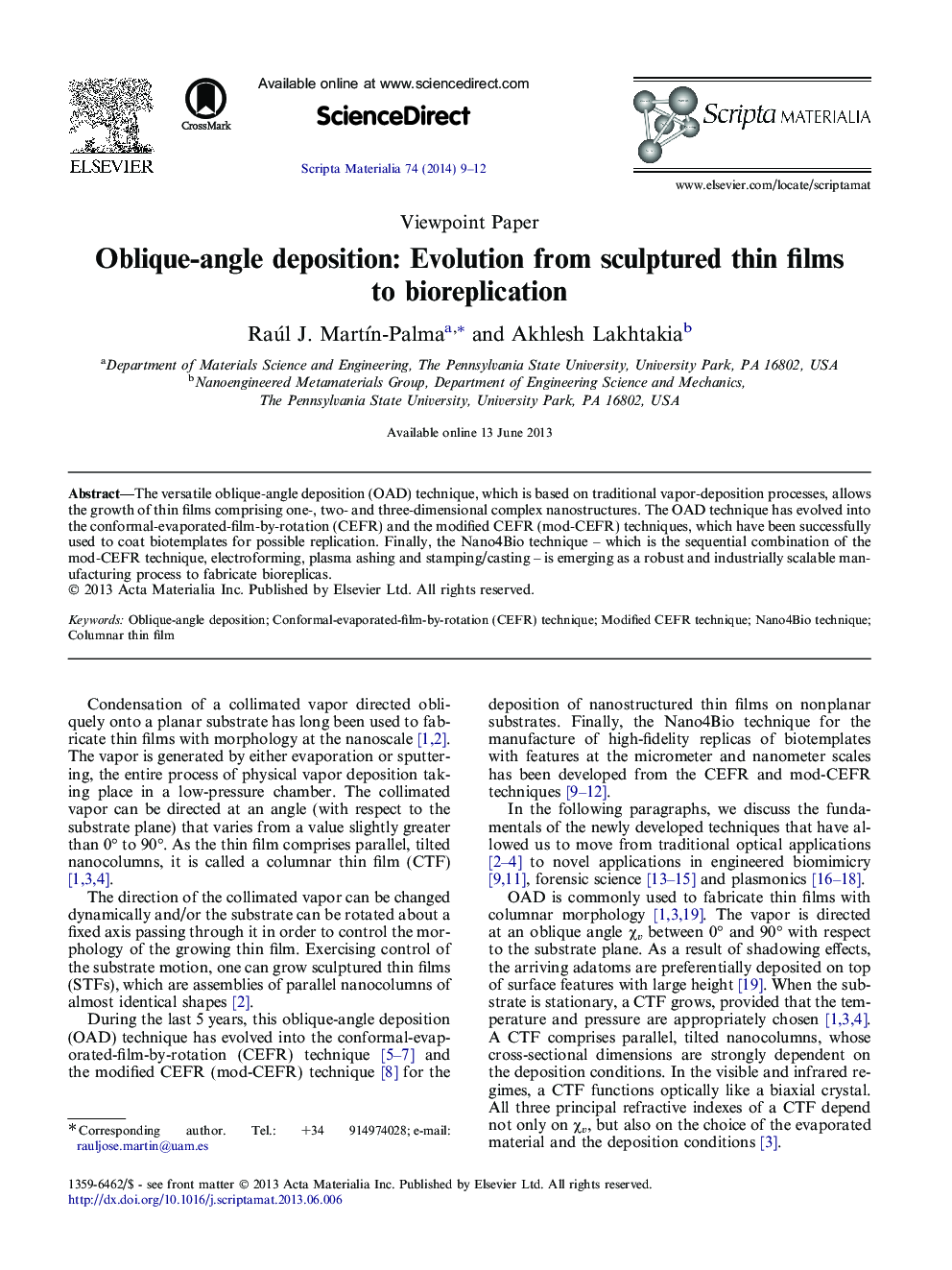| Article ID | Journal | Published Year | Pages | File Type |
|---|---|---|---|---|
| 1498473 | Scripta Materialia | 2014 | 4 Pages |
Abstract
The versatile oblique-angle deposition (OAD) technique, which is based on traditional vapor-deposition processes, allows the growth of thin films comprising one-, two- and three-dimensional complex nanostructures. The OAD technique has evolved into the conformal-evaporated-film-by-rotation (CEFR) and the modified CEFR (mod-CEFR) techniques, which have been successfully used to coat biotemplates for possible replication. Finally, the Nano4Bio technique – which is the sequential combination of the mod-CEFR technique, electroforming, plasma ashing and stamping/casting – is emerging as a robust and industrially scalable manufacturing process to fabricate bioreplicas.
Related Topics
Physical Sciences and Engineering
Materials Science
Ceramics and Composites
Authors
Raúl J. Martín-Palma, Akhlesh Lakhtakia,
